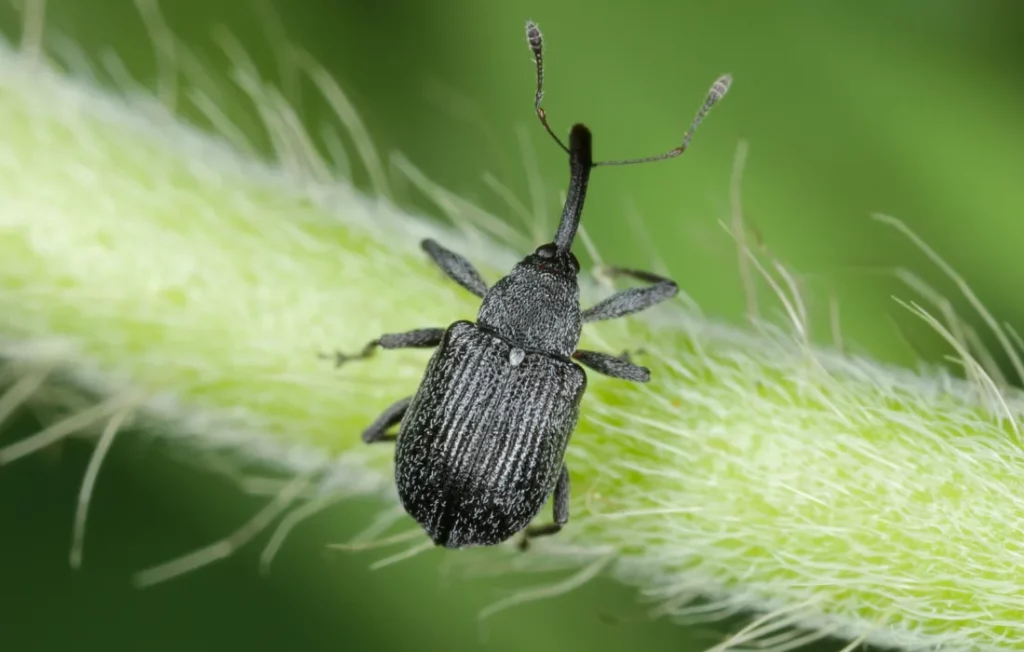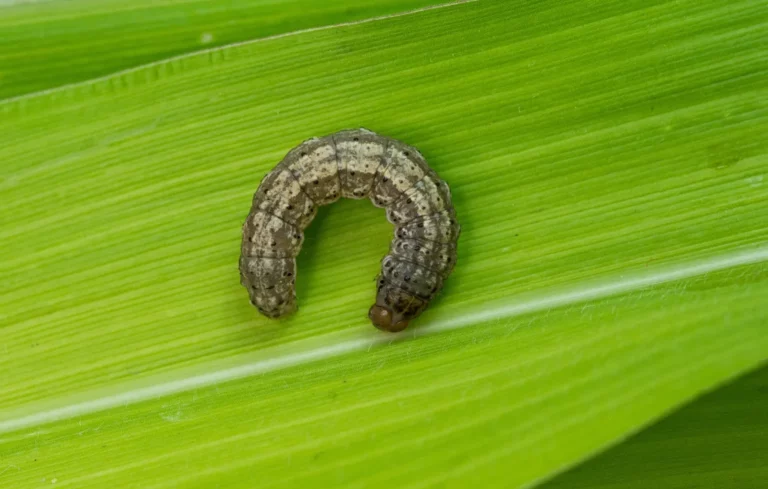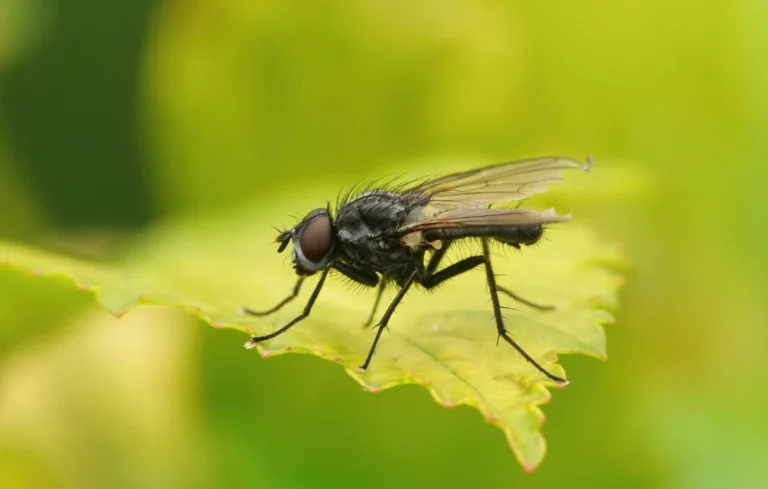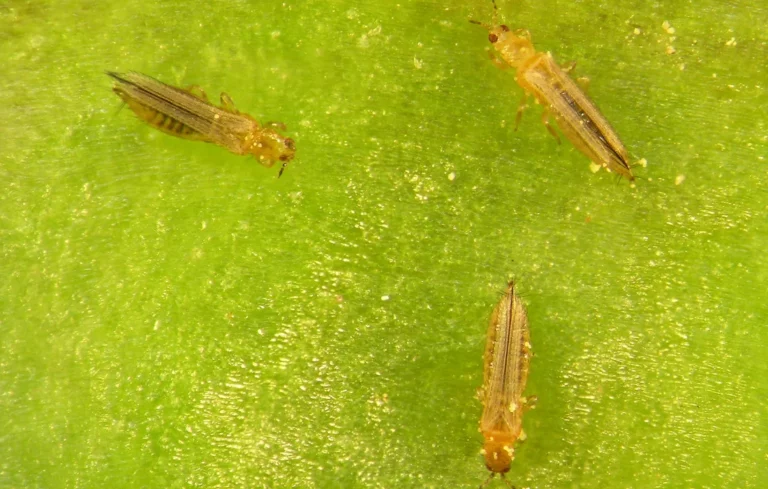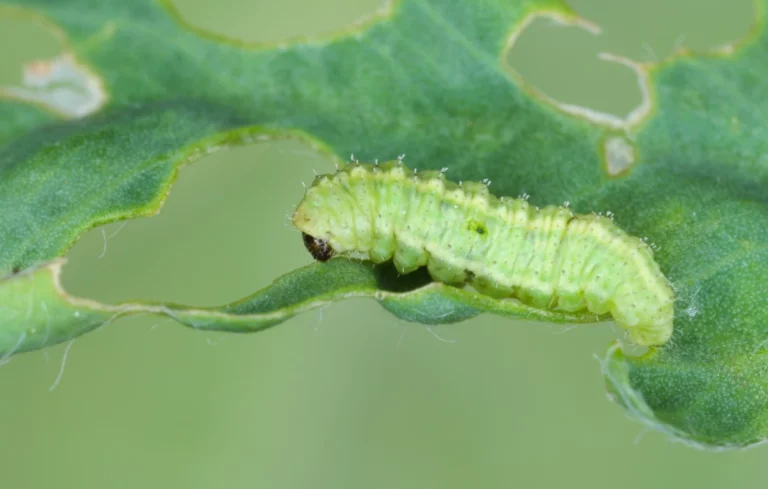The strawberry blossom weevil, also known by its scientific name Anthonomus rubi , is a well-known pest among strawberry and raspberry growers. This small black weevil attacks the flower buds of strawberry plants, seriously compromising flowering and production. A major attack can wipe out a large part of the harvest, with losses sometimes reaching 80%. How can you identify its damage? What control strategies can be implemented to avoid it?
Identification and description of the strawberry blossom weevil
The strawberry blossom weevil ( Anthonomus rubi ), also called the strawberry and raspberry weevil, is an insect belonging to the order Coleoptera and the family Curculionidae, commonly referred to as weevils. It is a pest particularly feared by strawberry and raspberry growers, due to the damage it causes directly to flower buds, thus compromising production.
- Adult : Small, matte black beetle measuring 2 to 4 mm, covered with fine grayish pubescence. It has a long rostrum and thin antennae. Its short, striated elytra partially cover its abdomen.
- Egg : Oval, translucent white, smooth and shiny. It measures approximately 0.5 mm long by 0.35 mm wide and develops in 5 to 6 days.
- Larva : Creamy white to white in color, it reaches 3 to 3.5 mm. Its head is light brown and its body is curved or arched. It feeds inside the flower buds for 18 to 22 days.
- Chrysalis : It forms directly in the flower bud. After about 8 days, the adult pierces the bud to emerge and begins a new cycle.
What are the host plants of the strawberry blossom weevil?
The strawberry blossom weevil mainly targets:
- Strawberries ( Fragaria spp. )
- Raspberry bushes ( Rubus idaeus )
It can also develop on other secondary hosts and wild plants such as:
- Bramble ( Rubus spp. )
- Roses and dog roses ( Rosa spp. )
- The mulberry tree
- The blueberry bush
- Wild strawberries
The presence of these secondary hosts near crops can promote the maintenance and proliferation of populations of this pest.
Do you need a natural solution against strawberry blossom weevil?
Development cycle
The strawberry blossom weevil only produces one generation per year . Young adults appear in late spring. They feed for a few days on the young leaves and corollas of strawberries and raspberries, then enter diapause. During this period, they take refuge under bark or in other natural shelters, waiting for the return of spring.
Upon emerging from diapause, the adults reactivate and mate. The females use their rostrum to bore into the flower buds and lay their eggs. By cutting into the flower stalk, they stop the flow of sap, causing the flowers to dry out and fall. Each female can lay up to a hundred eggs during her lifetime. Larval development takes place inside the bud, which will then not produce any fruit.
This cycle gives the insect formidable discretion: often, the damage is only visible after the eggs have been laid and the buds have begun to fall.
What damage does the strawberry blossom weevil cause?
Anthonomus rubi attacks are mainly concentrated in spring, when strawberry and raspberry plants are developing their flower buds. The consequences can be spectacular in infested plantations.
Affected flower buds have a clean cut of the peduncle . They hang limply or fall to the ground. When they remain attached to the plant, they dry out and produce no fruit . In strawberries, these losses translate directly into a significant reduction in yield. Older plantations are often more affected, due to dense vegetation and an increased presence of breeding sites.
Adults can also puncture petals while feeding, leaving visible marks on the flowers. However, the greatest losses come from the larvae, which destroy the buds from the inside. If left unchecked, this damage can compromise production profitability and weaken crops.
Agrobiotop solutions for combating the strawberry blossom weevil
At Agrobiotop, we develop natural products to combat fruit crop pests such as the strawberry weevil.
- YAKADOP Biostimulant : it is the first line of defense against diseases and pests. It strengthens and stimulates strawberry plants thanks to the various active ingredients, vitamins, amino acids and trace elements it contains. It is the major asset for obtaining quality yields
- YAKASELF biostimulant : it acts directly on the ruby anthonome , having a repellent and insecticidal action. Apply just before the flower buds appear. Also suitable for the apple blossom weevil (Anthonome pomorum ).
- Black soap
- Soapwort manure (active ingredients tannin)
Do not hesitate to contact us for more information.
Photo : Shutterstock

